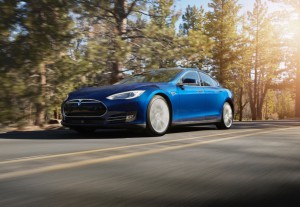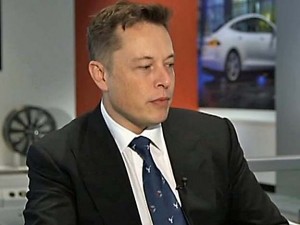During a conference call following the announcement of Tesla Motors’ disappointing second-quarter financial results, CEO Elon Musk suggested the Silicon Valley firm might need to raise more capital. That’s all the more likely, it appears, if the company continues to burn through cash building its money-losing Model S.
Despite winning generally rave reviews for the sedan, it appears the maker is losing at least $4,000 on every one of the electric vehicles it sells, according to a study by the Reuters News Service. And that, along with the hefty development costs for Tesla’s second product line, the Model X SUV, left it with barely $1.15 billion in cash at the end of June, about a 57% year-over-year decline.
And with Tesla forecasting it will short of earlier sales goals for all of 2015, the situation isn’t likely to improve anytime soon – one reason the maker’s stock has been in the doldrums since the maker revealed its Q2 numbers.
“The only way for us to feel good about the future is to exceed high expectations” for the company, Musk said during the call. For the moment, however, that isn’t the case.
(Tesla disappoints with 2nd-quarter earnings news. Click Here to find out why.)
The company’s financial woes are all the more disconcerting considering Tesla appears to be struggling at a time when much of the rest of the industry, particularly Detroit’s Big Three makers, are bringing in billions after nearly a decade of economic struggles.
On the other hand, backers caution that Tesla isn’t any ordinary auto company. It is in the midst of putting in place a significantly different business model, one that relies solely on battery power and a network of company-owned stores rather than the traditional franchised distribution network.
And though sales for the year are expected to run only between 50,000 and 55,000 – barely 0.5% of General Motors’ global total – it has been growing the numbers at a time when the overall electric vehicle market has been shrinking in the face of declining gasoline prices.
(Tesla puts a social spin on its first-ever incentive program. Click Here to learn more.)
The real test, Tesla stresses, will come with the launch of the Model X in the coming months. If Tesla hits its target, that would boost production volumes closer to 90,000 next year. And with the planned addition of the more mainstream Model III later in the decade, Tesla promises to build demand to as much as 500,000 electric vehicles annually.
But it will have a hard time getting there if it continues losing $4,000 a vehicle.
Of course, most makers would lose money when they’re operating well below capacity, as is the case at Tesla’s big Fremont, California factory – which had previously been operated as a joint venture between GM and Toyota.
That is far from certain. The old business joke is that, “We’re losing money on every one. But we make it up in volume.” But will volume alone help?
It could help to put the hefty development costs associated with the Model X in the rearview mirror. Tesla says it expects $1.5 billion in capital spending this year, and has already gone through $831 million. Musk noted that the development of the Model X has been far more “challenging” than originally anticipated, and added that the SUV will share fewer parts than first projected with the Model S sedan. That could reduce potential profits, meanwhile.
If anything, Barclay’s analyst Brian Johnson is cautious about future spending and cash reserves, warning, “Their small scale means the cash generation is not as great as they might have hoped for.”
Separately, Tesla is preparing to add a second business line with the upcoming launch of the maker’s back-up power technology. Musk claims it has already received initial indications of orders reaching into the billions of dollars, but he acknowledged those are not yet formal orders.
(Hacker attack forces Tesla to increase cybersecurity. Click Here for more.)



Please don’t report Tesla’s Biz challenges as their stockholders get upset when they see their money disappear.
As one journalist wrote… ALL of Elon Musk’s businesses rely on government grants, subsidies, etc. to exist and they really do not have any viable business models.
Actually the stock holders love the stock. It the corporate sheep that need herd mentality that are the one whinning.
A house of cards is doomed to fail. The charlatans are eventually disclosed for what they are. Denial is not a river in Egypt. The financial facts don’t lie but con artists do and suckers believe them.
Times change. By all accounts, it’s a mostly terrific car. When it was introduced, Tesla likely could have charged 10 percent extra and not lost many customers. And that would have produced about $5,000 added revenue per unit and Voila! to the $4,000 loss. But that was then. Now, with gas looking to fall to $2 a gallon short-term, even $10,000 less probably won’t help.
Times change but charlatans don’t. The SEC may have something to say about creative accounting practices.
By all accounts the model S is hackable as is the Jeep and probably many other vehicles we will learn about sooner than later. With battery powered vehicles soon to be replaced with hydrogen fuel cell powered models, Tesla could be out of Biz before long unless they can get some more free money from U.S. tax payers.
Obviously Musk plans to lose $4k per car but make up the difference on volume.